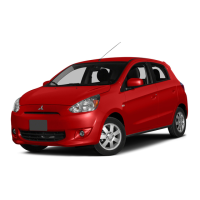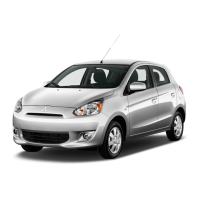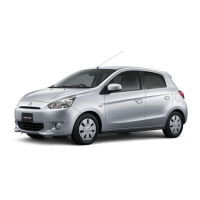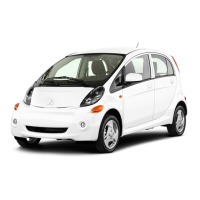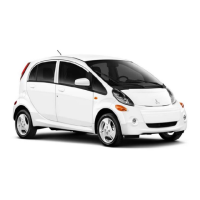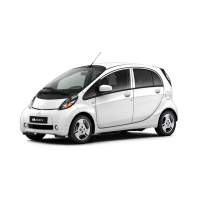Set the gearshift lever to the “N” (Neutral)
position.
Secure the steering wheel in a straight-ahead
position with a rope or tie-down strap.
Release the parking brake.
Place the gearshift lever in the “N” (Neutral)
position (manual transaxle) or the selector
lever in the “N” (NEUTRAL) position
(CVT).
N00837200750
If your vehicle becomes stuck in snow, sand,
or mud, it can often be moved by a rocking
motion. Rock your vehicle back and forth to
free it.
Do not rev the engine or spin the wheels.
Constant efforts to free a stuck vehicle can
cause overheating and transaxle failure. Let
the engine idle for a few minutes to cool the
transaxle before trying again.
If your vehicle is still stuck after several rock-
ing attempts, call for a commercial tow truck
service.
Do not tow continuously variable transmis-
sion (CVT) vehicles with the driving wheels
on the ground (Type B) as illustrated. If the
vehicle is towed like this, the continuously
variable transmission (CVT) fluid may not
reach all parts of the transmission, thus dam-
aging it.
If you tow CVT vehicles, use Type C, D or E
equipment.
If the manual transaxle is malfunctioning or
damaged, transport the vehicle with the driv-
ing wheels on a carriage (Type C, D or E) as
illustrated.
If the vehicle is towed with the ignition
switch in the “ON” position or the operation
mode in ON and only the front wheels or
only the rear wheels raised off the ground
(Type B or C), the Active Stability Control
(ASC) may operate, resulting in an accident.
When towing the vehicle with the rear
wheels raised, turn the ignition switch to the
“ACC” position or put the operation mode in
ACC. When towing the vehicle with the
front wheels raised, keep the ignition switch
or the operation mode as follows.
[Except for vehicles equipped with the
F.A.S.T.-key]
The ignition switch is in “OFF” or “ACC”
position.
[Vehicles equipped with the F.A.S.T.-key]
The operation mode is in OFF or ACC.
Avoid flooded roads. Water is often deeper
than it looks, and you could be seriously hurt
by driving into flood water.
When driving in rain, on water-covered
roads, or through a car wash, water could get
into the brake discs and make them fail tem-
porarily. In such cases, lightly press the
brake pedal to see if they are working prop-
erly. If they are not, press the pedal lightly
several times while driving to dry the brake
pads or linings, then check them again.
BK0235100US.book 13 ページ 2015年11月20日 金曜日 午後3時12分

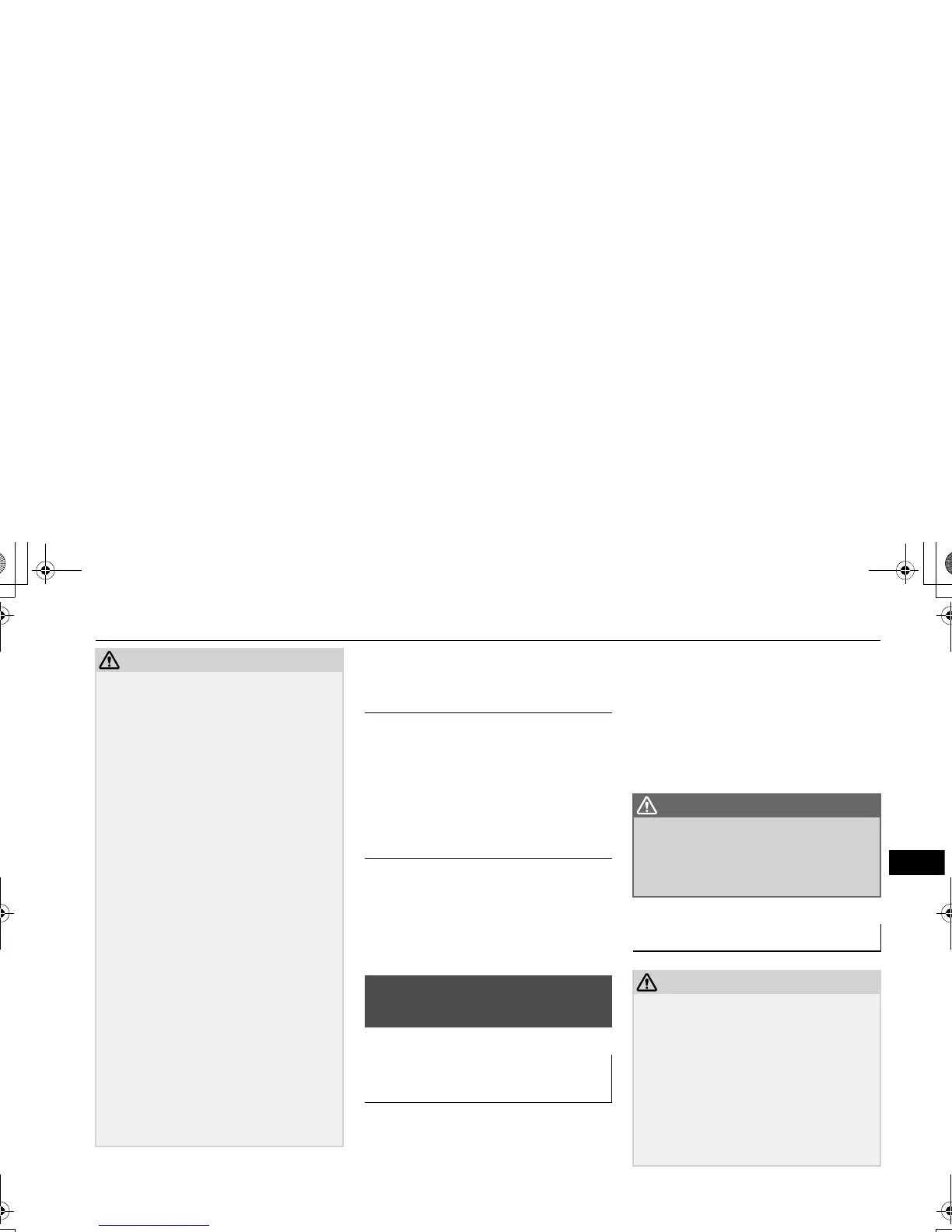